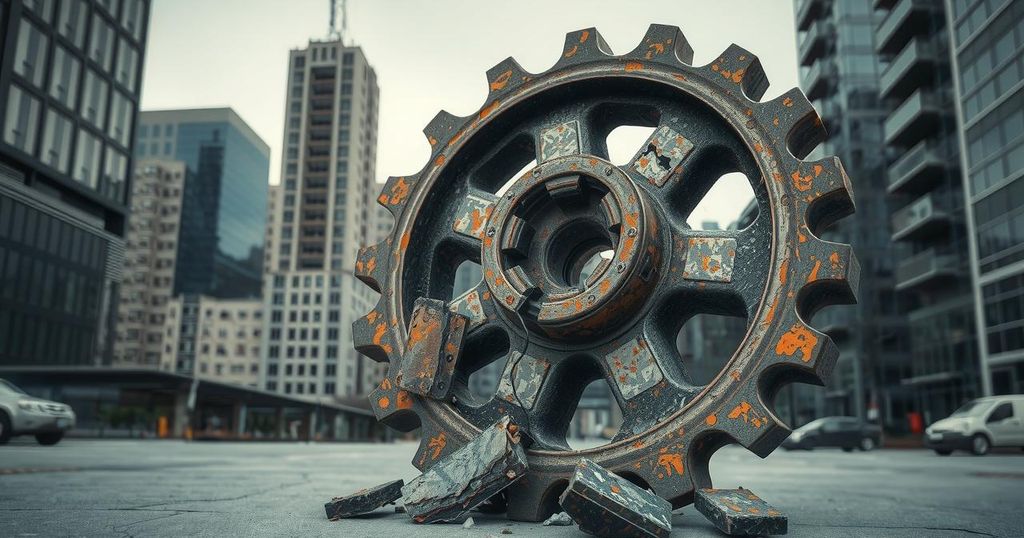Iran’s Economic Crisis Intensifies Amid U.S. Sanctions and Currency Collapse

Iran faces economic turmoil as Trump’s renewed sanctions depreciate the rial and drive inflation higher. The local currency has declined over 55% in value within a year, prompting citizens to hoard assets and express distrust in the government. Officials are debating between potential negotiations with the U.S. or accelerating nuclear programs, with final decisions pending from Supreme Leader Ali Khamenei.
The imposition of renewed sanctions by U.S. President Donald Trump has resulted in significant economic challenges for Iran. The Iranian rial has reached a historic low on the black market, trading at 858,000 rials per U.S. dollar. Official government exchange rates are not reflective of the true market value; following Trump’s re-election, the rial’s value declined by 25% against the dollar, exacerbating the contributing inflation crisis.
Since Trump’s re-election, the Iranian rial has seen a further 5.5% decline in value, effectively losing over 55% in the past year due to multiple regional conflicts and international pressures. As a direct result of this currency devaluation, inflation rates have surged, with independent economists disputing the government’s last reported inflation figure of 40% amidst ongoing hikes in essential goods.
The continued devaluation of the rial diminishes the purchasing power of Iranians, leading to widespread frustration regarding the government’s economic management. Factors such as rampant corruption, incompetence, and mismanagement have undermined public trust in institutions, driving citizens to safeguard their wealth outside conventional financial systems.
Recent accounts indicate that Iranians have amassed $70 billion in gold and foreign reserves, kept outside the official economy. Gholamreza Mesbahi-Moghaddam, a member of Iran’s Expediency Discernment Council, stated, “The state is seeking $5 billion in loans from international bodies, while $70 billion remains outside the economic system in private hands.”
Iranian leadership discussions regarding a response to U.S. sanctions sharpened following Trump’s recent actions. Some officials, aligning with President Masoud Pezeshkian’s pragmatic approach, favor negotiations to mitigate economic hardship and recover the Iranian economy, while the powerful ultraconservative faction advocates for an intensified nuclear program as a deterrent against U.S. policies. The supreme decision lies with Supreme Leader Ali Khamenei.
The context of this economic turmoil in Iran stems from sustained pressure from U.S. sanctions reintroduced under President Trump’s administration. The weakening of the rial symbolically reflects broader economic mismanagement and the population’s dwindling faith in their government’s ability to manage the economy effectively. The pivotal question remains how the Iranian leadership will respond to this external pressure and the potential internal backlash stemming from economic discontent.
In conclusion, Iran is grappling with severe economic challenges fueled by U.S. sanctions that have led to a drastic devaluation of its currency and rampant inflation. These economic struggles are contributing to public discontent and the hoarding of assets outside official channels. The Iranian leadership is at a crossroads, needing to decide between pursuing diplomatic negotiations or escalating nuclear capabilities in response to U.S. policies.
Original Source: www.ynetnews.com








